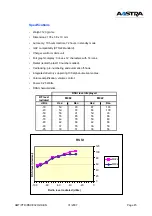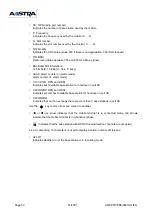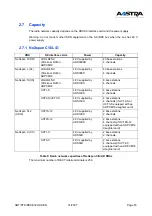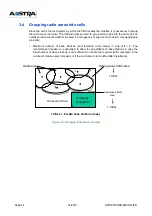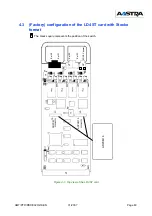
Page 58
01/2007
AMT/PTD/PBX/0020/2/4/EN
3.2
Determining the radio coverage
This section describes the principles of the site survey for positioning base stations in order to
achieve complete coverage of the area.
The purpose of deployment is to determine where to locate the base stations. This cannot be
achieved using only building plans; actual field measurements are required.
Certain deployment tools are used to make these measurements.
3.2.1 Deployment tool
The " M626x DECT Deployment Tool" is a DECT deployment case containing:
•
a test base station,
•
two test mobiles.
A description of the deployment tool and usage instructions are provided as part of the training.
Note:
This tool used for deploying M90x mobile terminals can also be used to deploy M910
and M92x mobile terminals.
3.2.2 Base station positioning survey
As assistance to the deployment tools, it is possible to conduct a site survey for positioning the
radio base stations.
The purpose of the survey is to determine the average size of the radio areas, which enables the
location of the base stations to be indicated on the map; and to determine the average size of the
area covered by each base station. Problem areas can also be identified and documented. The
coverage tool kit can then be used to check the locations indicated on the map and, taking into
account the traffic requirements, a final map can be drawn up.
Coverage area
To a large degree, the size of the radio area will depend on the materials used to construct walls,
ceilings and floors and on the presence of metal cabinets.
The area corresponding to a base station’s radio range is not exactly spherical as suggested in
illustrations. The size and shape of the area at any given moment depends on wall and floor
materials, location and materials of furniture, machines, air conditioning, and the positioning of
the base station in the environment.
Since these variable parameters must be taken into consideration, it is not possible to apply rigid
rules to the calculation of the number of base stations for any given situation.
Note:
Simple lightweight or shielded concrete, plaster, and wood absorb radio waves or cause them to
be propagated in different ways.
Metal walls and long rows of metal cabinets reflect all signals, resulting in significant reduction in
coverage behind them.
Hospital radiology rooms protected by lead walls, and computer rooms in banks protected
against all types of interference do not allow propagation of radio signals.
Содержание NeXspan C
Страница 2: ...Page 2 01 2007 AMT PTD PBX 0020 2 4 EN...
Страница 20: ...Page 20 01 2007 AMT PTD PBX 0020 2 4 EN...
Страница 66: ...Page 66 01 2007 AMT PTD PBX 0020 2 4 EN...
Страница 70: ...Page 70 01 2007 AMT PTD PBX 0020 2 4 EN Figure 4 2 Bottom view of the LD4 ST card...
Страница 134: ...Page 134 01 2007 AMT PTD PBX 0020 2 4 EN...
Страница 160: ...Page 160 01 2007 AMT PTD PBX 0020 2 4 EN...


